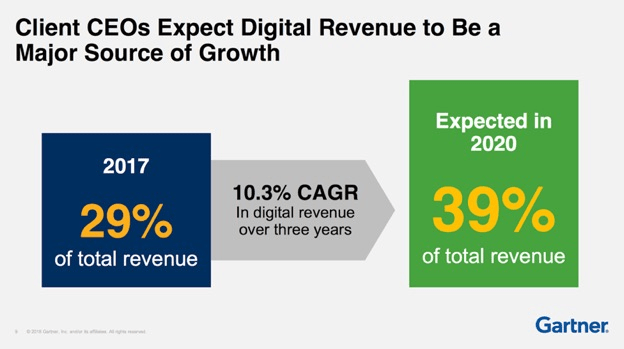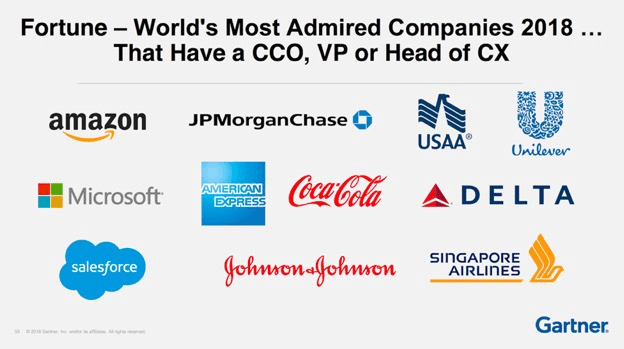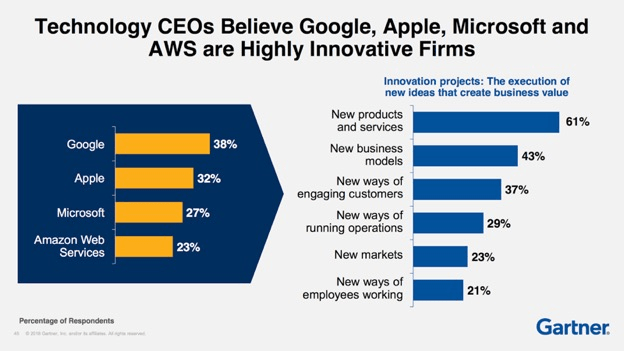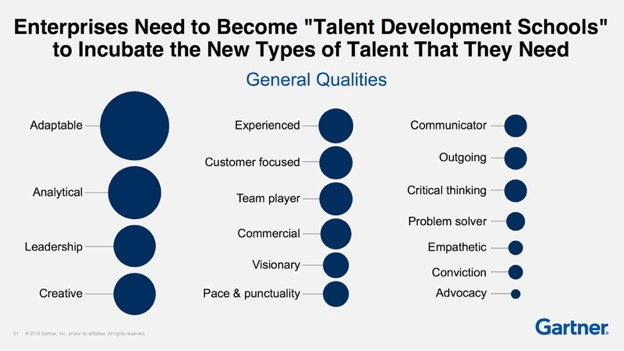“By 2020, your company will either lead a digital business industry vision you have created or be part of one created by someone else… IF you are still in business …” – Helen Huntley, Gartner VP of worldwide IT services and sourcing
In the age of digitisation, keeping pace with technology changes is a daunting task, especially when change occurs rapidly across multiple fronts. On a cloudy day in San Diego, VP of worldwide IT services and sourcing Helen Huntley kicked off the 2018 Gartner Tech Growth and Innovation Summit with a keynote on the need for technology leaders to exploit rapid change.

As software continues to eat our world at hyperspeed pace, CEOs expect digital revenue to be 39 percent of total revenue, and a major source of growth, by 2020. To capture more revenue, 62 percent of CEOs have a management initiative or transformation program to make businesses more digital.
Despite the focus and changing allocations of IT budgets from efficiency to growth, 83 percent of businesses are unable to scale their digital innovations, thus widening the gap between technology leaders and laggards.
To keep pace with digital disruption, Huntley presented five key takeaways:
1. Adapt your business model: In order to grow, companies must be prepared for all aspects of their business model (customer, value proposition, profit model, capabilities) to change. In recent months, Walmart has been aggressively forging new partnerships with FedEx, Uber, CarSaver and Handy to create a one-stop shopping experience for consumers. To stay relevant and compete with Amazon, Walmart needs to transform its traditional retail business and create an ecosystem of services. By 2020, 63 percent of CEOs expect to see their companies’ business models fundamentally change.
2. Concentrate on the customer experience (CX): While CX, the cumulative effect of interactions with a brand’s employees, channels, systems or products, has become the buzzword du jour and entered boardroom conversations, most companies still lack a focused effort on understanding user’ needs. To succeed, companies need a strong point-of-view of what their customers want and create a single, unifying strategy that defines, measures and improves the overall CX. Not surprisingly, many companies who made it onto FORTUNE’s 2018 World’s Most Admired Company rankings also had a dedicated Chief Customer Officer to own and represent the voice of the customer.

3. Change the value conversation (from the value of IT to the value of the digital business): Instead of only measuring IT’s success in optimization, companies should also measure IT on ROI, asset valuation and return on assets. Huntley suggested that companies should be measured on their overall digital economics – the creation, consumption and control of value associated with digital products, services and assets in organizations.
4. Build an innovative culture: Of the 83 percent of CIOs who reported they have trouble scaling digital innovations, culture was named as the biggest barrier. To survive rapid changes, companies need to shift from a “fixed mindset” to a “growth mindset.” Companies with a “fixed mindset” tend to frown on failures, value consensus and group think, and only hire people with “proven” experiences. On the other hand, companies with a “growth mindset” create the time and space for uncertainty to exist. They are always on the quest for breakthrough business outcomes. They listen generously to their customers. They foster a start-experiment-learn-iterate culture and they focus on diversifying their talent. Not surprisingly, the tech titans Google, Apple, Microsoft and Amazon all exhibit the behaviors of a “growth mindset.”

5. Focus on talent: Last but not least, companies need to stay ahead of the intense war for talent. The most significant constraints to overcoming growth for tech CEOs were finding and hiring talent, and developing and retaining talent. Companies need to think outside the box for talent and consider emerging solutions, such as on-demand workforce models and skills-based hiring instead of college degrees. In order to sustain an innovative culture, companies need to mentor and incubate the new types of talent they need.

All images courtesy of Gartner


